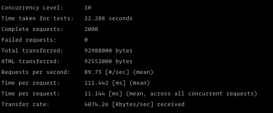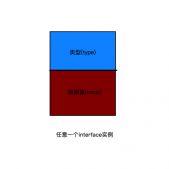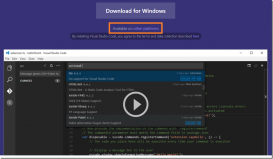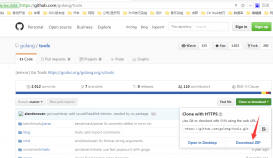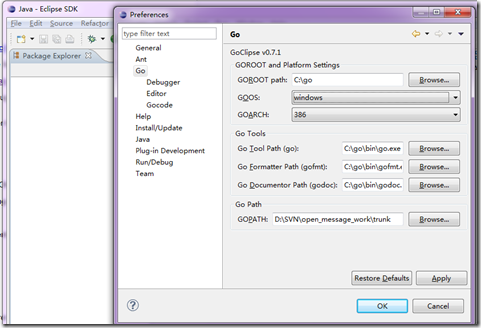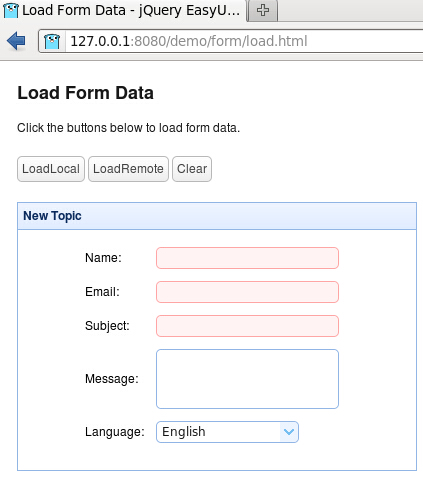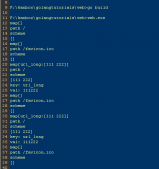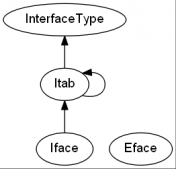下面一个客户端代码例子访问kafka服务器,来发送和接受消息。
使用方式
1、命令行参数
|
1
2
3
4
5
6
7
8
9
10
11
12
13
14
15
16
17
18
|
$ ./kafkaclient -hUsage of ./client: -ca string CA Certificate (default "ca.pem") -cert string Client Certificate (default "cert.pem") -command string consumer|producer (default "consumer") -host string Common separated kafka hosts (default "localhost:9093") -key string Client Key (default "key.pem") -partition int Kafka topic partition -tls TLS enable -topic string Kafka topic (default "test--topic") |
2、作为producer启动
|
1
2
3
4
5
6
7
|
$ ./kafkaclient -command producer \ -host kafka1:9092,kafka2:9092## TLS-enabled$ ./kafkaclient -command producer \ -tls -cert client.pem -key client.key -ca ca.pem \ -host kafka1:9093,kafka2:9093 |
producer发送消息给kafka:
|
1
2
3
4
5
|
> aaa2018/12/15 07:11:21 Produced message: [aaa]> bbb2018/12/15 07:11:30 Produced message: [bbb]> quit |
3、作为consumer启动
|
1
2
3
4
5
6
7
|
$ ./kafkaclient -command consumer \ -host kafka1:9092,kafka2:9092## TLS-enabled$ ./kafkaclient -command consumer \ -tls -cert client.pem -key client.key -ca ca.pem \ -host kafka1:9093,kafka2:9093 |
consumer从kafka接受消息:
2018/12/15 07:11:21 Consumed message: [aaa], offset: [4]
2018/12/15 07:11:30 Consumed message: [bbb], offset: [5]
完整源代码如下
这个代码使用到了Shopify/sarama库,请自行下载使用。
|
1
2
3
4
5
6
7
8
9
10
11
12
13
14
15
16
17
18
19
20
21
22
23
24
25
26
27
28
29
30
31
32
33
34
35
36
37
38
39
40
41
42
43
44
45
46
47
48
49
50
51
52
53
54
55
56
57
58
59
60
61
62
63
64
65
66
67
68
69
70
71
72
73
74
75
76
77
78
79
80
81
82
83
84
85
86
87
88
89
90
91
92
93
94
95
96
97
98
99
100
101
102
103
104
105
106
107
108
109
110
111
112
113
114
115
116
117
118
119
120
121
122
123
124
125
126
|
$ cat kafkaclient.gopackage mainimport ( "flag" "fmt" "log" "os" "io/ioutil" "bufio" "strings" "crypto/tls" "crypto/x509" "github.com/Shopify/sarama")var ( command string tlsEnable bool hosts string topic string partition int clientcert string clientkey string cacert string)func main() { flag.StringVar(&command, "command", "consumer", "consumer|producer") flag.BoolVar(&tlsEnable, "tls", false, "TLS enable") flag.StringVar(&hosts, "host", "localhost:9093", "Common separated kafka hosts") flag.StringVar(&topic, "topic", "test--topic", "Kafka topic") flag.IntVar(&partition, "partition", 0, "Kafka topic partition") flag.StringVar(&clientcert, "cert", "cert.pem", "Client Certificate") flag.StringVar(&clientkey, "key", "key.pem", "Client Key") flag.StringVar(&cacert, "ca", "ca.pem", "CA Certificate") flag.Parse() config := sarama.NewConfig() if tlsEnable { //sarama.Logger = log.New(os.Stdout, "[sarama] ", log.LstdFlags) tlsConfig, err := genTLSConfig(clientcert, clientkey, cacert) if err != nil { log.Fatal(err) } config.Net.TLS.Enable = true config.Net.TLS.Config = tlsConfig } client, err := sarama.NewClient(strings.Split(hosts, ","), config) if err != nil { log.Fatalf("unable to create kafka client: %q", err) } if command == "consumer" { consumer, err := sarama.NewConsumerFromClient(client) if err != nil { log.Fatal(err) } defer consumer.Close() loopConsumer(consumer, topic, partition) } else { producer, err := sarama.NewAsyncProducerFromClient(client) if err != nil { log.Fatal(err) } defer producer.Close() loopProducer(producer, topic, partition) }}func genTLSConfig(clientcertfile, clientkeyfile, cacertfile string) (*tls.Config, error) { // load client cert clientcert, err := tls.LoadX509KeyPair(clientcertfile, clientkeyfile) if err != nil { return nil, err } // load ca cert pool cacert, err := ioutil.ReadFile(cacertfile) if err != nil { return nil, err } cacertpool := x509.NewCertPool() cacertpool.AppendCertsFromPEM(cacert) // generate tlcconfig tlsConfig := tls.Config{} tlsConfig.RootCAs = cacertpool tlsConfig.Certificates = []tls.Certificate{clientcert} tlsConfig.BuildNameToCertificate() // tlsConfig.InsecureSkipVerify = true // This can be used on test server if domain does not match cert: return &tlsConfig, err}func loopProducer(producer sarama.AsyncProducer, topic string, partition int) { scanner := bufio.NewScanner(os.Stdin) fmt.Print("> ") for scanner.Scan() { text := scanner.Text() if text == "" { } else if text == "exit" || text == "quit" { break } else { producer.Input() <- &sarama.ProducerMessage{Topic: topic, Key: nil, Value: sarama.StringEncoder(text)} log.Printf("Produced message: [%s]\n",text) } fmt.Print("> ") }}func loopConsumer(consumer sarama.Consumer, topic string, partition int) { partitionConsumer, err := consumer.ConsumePartition(topic, int32(partition), sarama.OffsetNewest) if err != nil { log.Println(err) return } defer partitionConsumer.Close() for { msg := <-partitionConsumer.Messages() log.Printf("Consumed message: [%s], offset: [%d]\n", msg.Value, msg.Offset) }} |
编译:
|
1
|
$ go build kafkaclient.go |
以上就是本文的全部内容,希望对大家的学习有所帮助,也希望大家多多支持服务器之家。
原文链接:https://www.jianshu.com/p/3102418e5a7d





